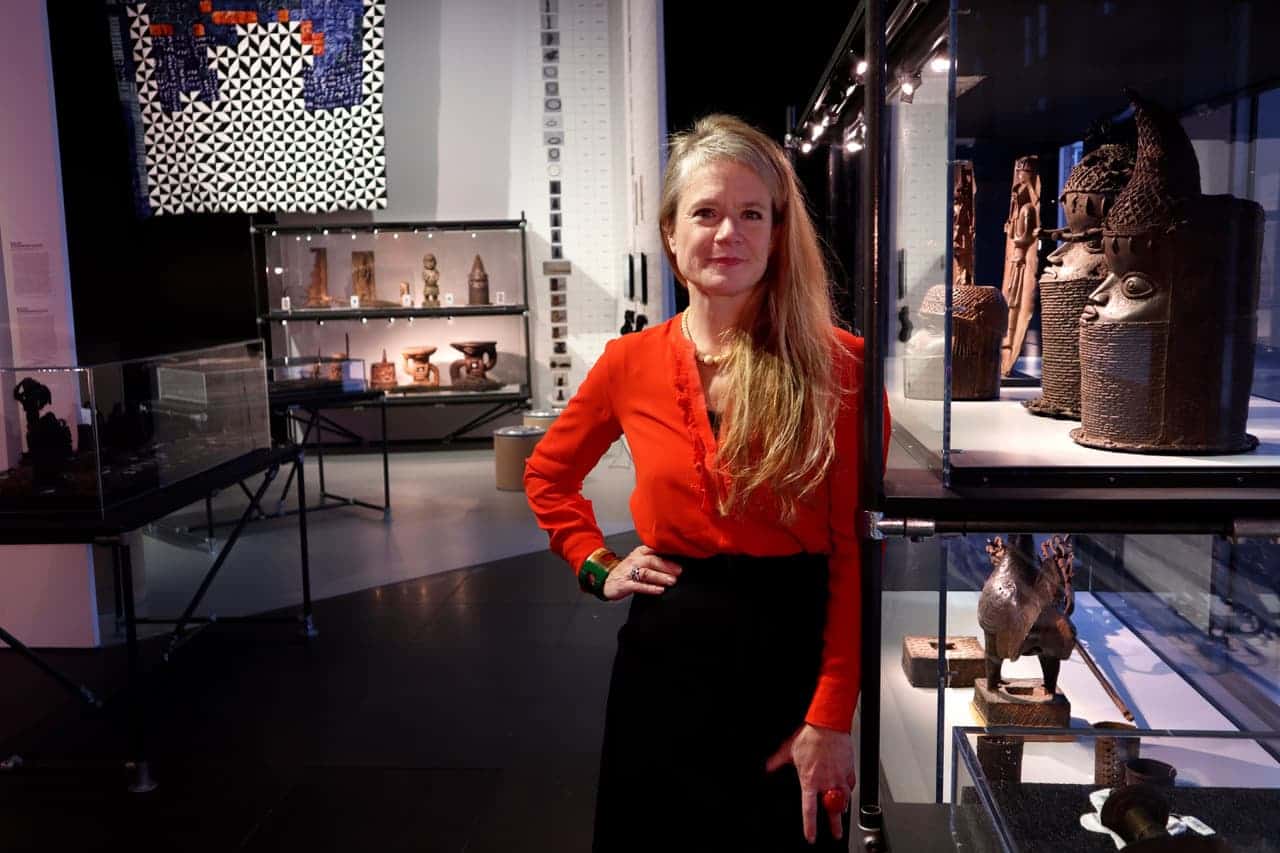Article
Locations and dates
In December 2022, the Rautenstrauch-Joest Museum (RJM) in Cologne transferred its 92 Benin bronzes to Nigeria. While the majority of the artworks are being handed over to the care of the African state, some sculptures are to remain in Cologne as loans. The cultural expert spoke some time ago with RJM director Nanette Snoep about the future of ethnological museums and the difficult handling of European colonial history. Our interview can be read again here.
Ms. Snoep, as the director of an ethnological museum, you are addressing questions of the future quite actively. In one of your latest special exhibitions, titled "RESIST! The Art of Resistance". There, colonial history was illuminated for the first time from the perspective of the colonized. Why did you choose this path?
NS:
There have been several exhibitions on colonial history in the past. However, it has always been told from a Eurocentric perspective. I am convinced that now is the high time to broaden the view and let those affected or their descendants tell their stories. Therefore, the exhibition should give space to the resistance of the colonized people and their narratives. It should make their voices, which have been scarcely heard so far, audible. To this end, we have also searched our own collection for objects that document rebellion, refusal, and defiance against the colonial powers.
Did you find many such objects?
NS:
Although I have been dealing with colonial history for decades, I was still able to learn an immense amount of new things while working on the exhibition. I had no idea at all how many pieces of the collection said something about resistance.
For example?
NS:
We showed a small ivory pendant from the Congo. After the uprisings of the Pende ethnic group against Belgian colonial rule were brutally suppressed, their masks were banned. To circumvent the ban, they transformed the masks into small pendants – as a secret sign of solidarity against the colonial power. The costumes from Guatemala that we displayed in the exhibition also have their own history of resistance: In such disguises, people there reenacted conquest stories while dancing. However, in such a way that the Spanish colonial rulers could not understand anything.
They also invited over 40 contemporary artists and curators from the Global South to Cologne to reveal their own perspectives on the matters and their significance.
NS:
Yes, we had invited Esther Utjiua Muinjangue and Ida Hoffmann, two activists from Namibia, who curated their own space in the exhibition. They addressed the German genocide against the Herero and Nama and their own bitter struggle for its recognition. The Nigerian artist Peju Layiwola, on the other hand, dealt with the explosive restitution debates surrounding looted cultural assets from the former Kingdom of Benin in her space.
How should ethnological museums, in your opinion, deal with their looted treasures from colonial contexts of injustice? What position do you take in the discussions on restitution that have been so heatedly conducted in the German-speaking world for several years?
NS:
Transparency and access to the collection of the Rautenstrauch-Joest-Museum are very important. That is why we are also intensively advancing the online presence of our collection, so that really everyone can access our databases. In addition, we are seeking an intensive exchange with the countries from which the objects originate.
Should such pieces be returned in general, in your opinion?
NS:
One must make it clear that colonialism is an injustice by definition, it has always taken place in unequal power relations. Therefore, I advocate for a regulation that is already practiced in the Netherlands: If an object from the society it was taken from is still truly missed to this day, then the museum should restitute it. For other works, agreements could be conceivable – an object could, for example, remain in Europe and travel to its country of origin when it is needed there. This is about an ethical debate and not about a purely legal classification. We need to consider this much more fluidly and definitely allow people from the countries of origin to participate in determining how their objects are presented in Europe.
